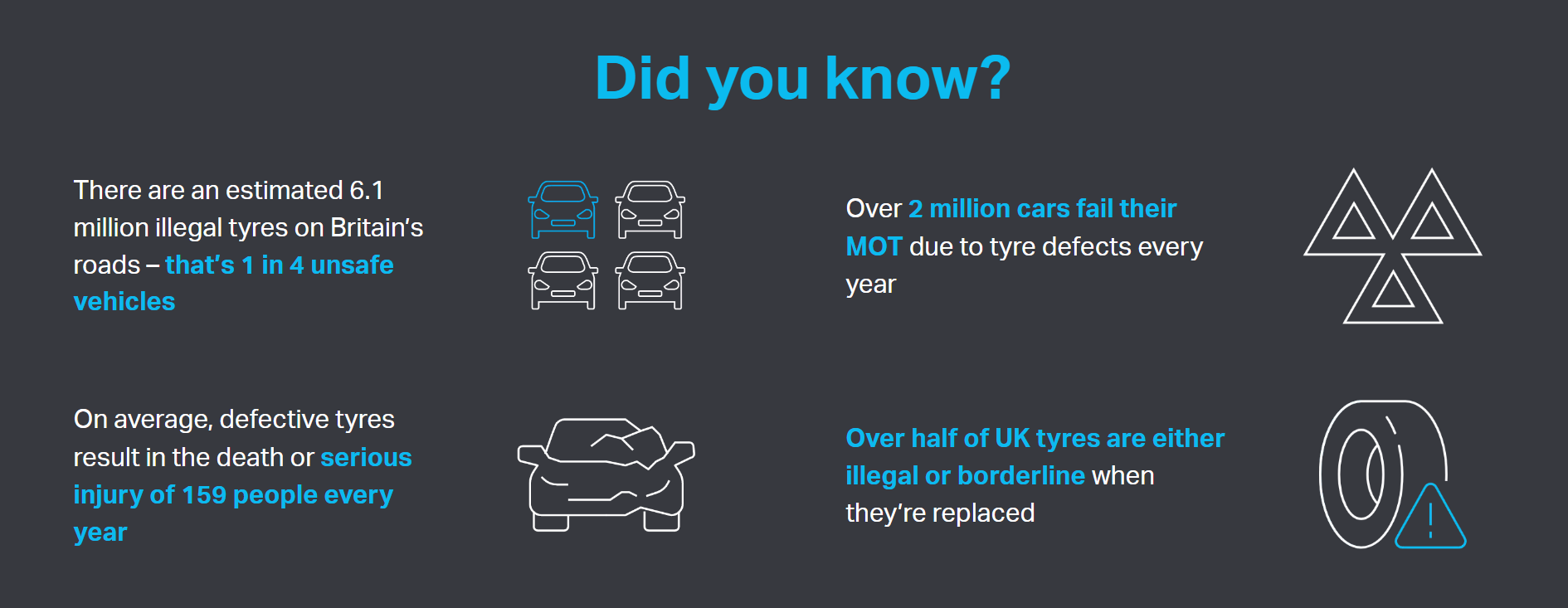Across many European countries, winter tyres are essential during the colder months. However, you may be wondering if they are a necessity in the UK.
Winter tyres are a topic that will likely stir up a debate among UK drivers. But if you’re still on the fence, you may find our winter tyres guide rather useful.
Here’s everything you need to know about winter tyres and whether they’re right for you.
What are winter tyres?
The major difference between winter tyres (sometimes known as cold weather tyres) and regular ones is the tread depth, with the former starting at between 8 and 9mm and the latter measured at 7 and 8mm.
You’ll also notice that the grooves within a winter tyre are wider and deeper as well, which allows snow and water to pass through more easily.
The final (and more technical) difference is in the rubber. The compound in winter tyres consists of more natural rubber and silica, which doesn’t harden as much in cold weather like the synthetic rubber used in normal tyres.
All of these attributes help to improve grip and performance during cold, icy and snowy conditions.
The benefits of winter tyres
The key benefits of winter tyres are that their attributes allow them to offer enhanced performance during wintery conditions. This means:
- Shorter stopping distances
- Improved performance in cold/wet/icy weather
- Less risk of aquaplaning
While winter tyres are a legal requirement in European countries such as Germany, Austria and Sweden, they are not a necessity in the UK but may be advised during particularly cold and icy weather.
Regardless, there are plenty of safety benefits to regularly changing your tyres too.
 *All stats from Tyresafe
*All stats from Tyresafe
How much are winter tyres?
The cost of winter tyres will vary greatly depending on the make and model of your vehicle. At Halfords, we stock a wide range of renowned tyre brands, including winter tyres, from companies such as Avon, Bridgestone and Continental.
Are winter tyres worth it?
In truth, this one is down to you. While the difference in the tread and finer detail of the rubber may be a tad alien to most regular drivers, they do offer some important benefits like better grip and an improvement in stopping distances.
To put this into context, tyre manufacturers Continental reckon that winter tyres will come to a standstill on a snowy road after 35 metres when travelling at 30mph. Whereas a car with normal tyres in the same conditions will take 43 metres to do the same.
This is especially important when research conducted by Insure the Box believe that drivers are 20% more likely to be in a crash during the colder winter months.
However, changing tyres in both summer and winter will naturally cost more money as years go on. And then there’s the small (or big) matter of storing the ones you aren’t using when they are out of season.
You could also argue that the UK doesn’t get many snowy days – which is when winter tyres really come into their own.
What’s more, if you forget to change the winter tyres over in the summer, you could lose a lot of grip and increase braking distances as the rubber isn’t designed for temperatures above 7 degrees.
In essence, your decision probably boils down to your location. For instance, if you live in a busy city, the roads to your work will usually be quite clear and well-gritted even in the most severe conditions. Whereas in more rural areas, you may not get the same luxury.
Other tyre alternatives
If you don’t fancy going to the garage to change your tyres every six months, snow chains and socks make wonderful alternatives.
One of the biggest plus points, beside their top performance, is the fact you can keep using them year in year out – providing you look after them.
You can just apply them yourself when the weather starts to get colder and take them off when (eventually) the sun comes out again!
To find the right snow chain or socks for your car, check out the range here.
Same-day tyre fitting
Did you know that we now offer same-day tyre fitting across our garages nationwide? Simply book online before 1pm and we can replace your tyres the same day to help you get you back on the road safely and swiftly. Please note that availability varies by location. For more information, please head on over to our dedicated same day tyre fitting page where you can find answers to frequently asked questions, choose the right tyres for your vehicle and book your appointment.